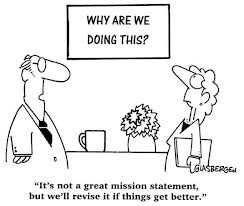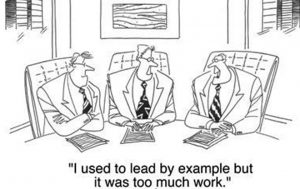
Today’s Morning Buzz is by Rafael Baptista. Connect with Rafael on LinkedIn and Twitter!
What I’m watching: 30 Rock
What I’m reading: Winning by Jack Welch
What I’m listening to: The Lead Podcast
Does your local government have a mission statement? Can you recite it without having to look for it and if so, can you also articulate how your work supports that mission statement?
The honest answer is that most local government employees will answer yes to the first question and no to the subsequent ones. I will admit that I, too, would answer the same way in previous organizations. In my current role, I have come to more fully understand the importance of a mission statement and how to make it matter and stick in an organization. My goal for today’s morning buzz is to explain the importance of mission statements and to explain how to make it matter and stick in your organization.
The Importance of Mission Statements
Let’s be real and admit that in local government it’s easy to just keep doing what we have always done. You may have seen this example play out in your organization: We have always done this service and the people providing that service are busier so we need to hire more people. But is that service actually achieving positive outcomes or are we just spending money without knowing what outcome we are purchasing?
We need to know what our local government stands for, and what kind of community it is striving to become. We need a north star that voters can hold us accountable for, elected officials and leadership can budget for and that all employees can base their actions on.
I recently listened to a podcast interview with the founder of JetBlue, who used to be a senior executive at Southwest Airlines and years later he still remembered the mission statement of Southwest Airlines, which is, “…dedication to the highest quality of customer service delivered with a sense of warmth, friendliness, individual pride, and company spirit.” He talked about the customer service obsession that was required of everyone, which was driven by their core mission. We have all seen the Youtube videos of the amazing customer service provided on Southwest Airlines. That is the power of an amazing mission statement.
An example for me was when I first applied for a position in our Office of Economic Development and Innovation. The mission statement of prosperity for all was explicitly stated in the job posting as well as the strategy for achieving that mission (equitable economic development). I thought it was awesome that the mission was so clearly stated. Eight months into the role, I have come to learn and love that our mission statement drives everything that we do. We make decisions based on that mission statement and hire staff based on their ability to help us achieve that mission. Personal finance and leadership author Dave Ramsey talks about how a good mission statement becomes an out-of-bounds marker for your ideas. He writes, “If your company builds lawn mowers, then is interior design really a good thought? Be real with yourself. Examine why you started the business, and don’t set yourself up for failure.
How to make it matter and stick
What I want to focus on is the really hard work of making your mission statement matter and stick within your organization. As I stated at the top of this post, lots of organizations have mission statements that most employees don’t know and thus don’t make decisions based on that mission statement. The first step is of course to write a good mission statement that is clear and actionable. Some other tips are:
Talk about it regularly with both internal and external audience: Make it clear on a regular basis to all your stakeholders what your mission statement is and how important it is to you. Something that our Economic Development Director has taught me is that if you regularly share your mission statement to organizations seeking funding from you, their work will start to better align with your goals. It can also help you know when to say “no.” to an external group. In my role, I manage a grant program that awards $25,000 grants to businesses. I can easily explain to potential applicants that the grant is aimed at supporting our mission and that applications that don’t support our mission won’t be funded. It stops being a matter about the quality of an application but rather the alignment of the application to our mission. I have learned that applicants react much better to the alignment discussion.
This also helps your internal audience know how to operate within the organization because they have an automatic tool for seeing if a decision moves the needle forward for your organization.

Leadership needs to make decisions based on the mission statement: Actions speak louder than words. If leaders don’t make decisions based on the mission statement, then no one in the organization will. A good tip here is for leaders (at any level) to explain their decision making process and how the decision supports the mission statement.
Do you feel like your organization does a good job of supporting its mission statement across all levels of the organization? Share examples or ideas you have on how organizations can do this better!
